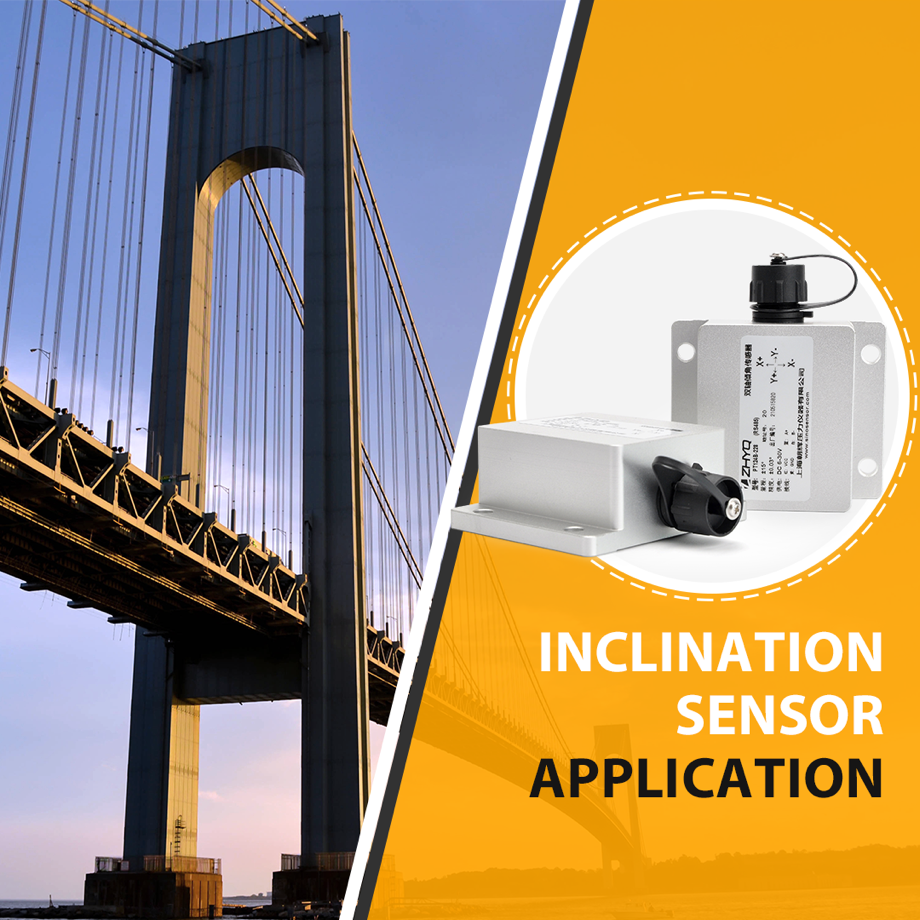An inclination sensor is an acceleration sensor that uses the principle of inertia to measure the change of inclination relative to the horizontal plane.
Inclination sensors are widely used in a variety of angle measurement applications across a wide range of industries. Below are some of the applications where inclination sensors are used.
Bridge structure health monitoring
Weather is a key factor for all types of bridges. It is very important to monitor real-time bridge health status to prevent any serious incident from happening. Bridge health monitoring systems monitor a range of variables including environmental conditions, deformation, stress and strain, and bridge deck load, among others. Changes in tilt angle represent a significant factor in signal the potential for an incident. Inclination sensors can communicate with monitoring systems to detect any changes and send warning messages to the operator.
Inclination sensors are usually placed on the bridge deck to measure the deformation of the bridge under load, and on the pylons to evaluate the integrity and stability of the overall structure. The bridge tower is another point that needs to be monitored by inclination sensors. The inclination value of the bridge tower offers a significant reflection of the integrity and stability of the overall structure, and whether it will endanger the safety of the bridge.
Rotary drilling rig operation
Rotary drilling rig is widely used in building and construction industry, most commonly drilling through sandy soil, clay soil, silty soil and other soil layers.
The barycentre position of a rotary drilling rig is the key factor affecting its stability. Both static and dynamic factors are the most important factors that can affect the centre of gravity on rotary drilling machines. Static factors include the angle between chassis and horizontal plane, the position of the luff mechanism, the tilt of the mast, and the weight of each component of the rig. There are also dynamic factors such as adding pressure, lifting force and turning speed.
The rotary centre of a drilling rig is normally set as the origin of co-ordinates when calculating the rotating drill centre. The calculation is based on data collected from inclination sensors installed on the luffing boom, the mast and the machine body.
In addition, the direction of the drill bit on a hydraulic rig determines the success of the drilling process. Inclination sensors are built into the bit to analyse the real-time status of the drill bit.
Aerial work platform monitoring
It is very important to keep aerial work platforms flat and steady to minimise risks and avoid any potential hazard. Monitoring systems can communicate with inclination sensors to show the real-time angle of the whole platform. It is a key contributor to ensuring a safe working environment on an aerial work platform.
Inclination sensors are widely used in aerial works for building construction and maintenance. Because any aerial work requires a platform for operator, an inclination sensor is installed on the bottom chassis of the platform to detect any anomalies. The system will send highlighted warning messages to the operator if there are any changes in the platform angle.
Machinery and vehicles
Inclination sensors are widely used on machines and vehicles across various industries such as manufacturing, agriculture and construction. Across these industries, efficiency is a key factor in enabling companies to improve revenue and performance. For example, due to the nature of soil, agricultural machinery and equipment can easily lose traction and move slowly. With an inclination sensor installed on the hydraulic control system, operators can determine best practices with real-time data, enabling work to be undertaken quickly and efficiently.
Inclination sensors are highly reliable instruments that can improve safety levels in field operations and warn operators of any potential risks. As an added benefit, they can also improve workplace efficiency.

